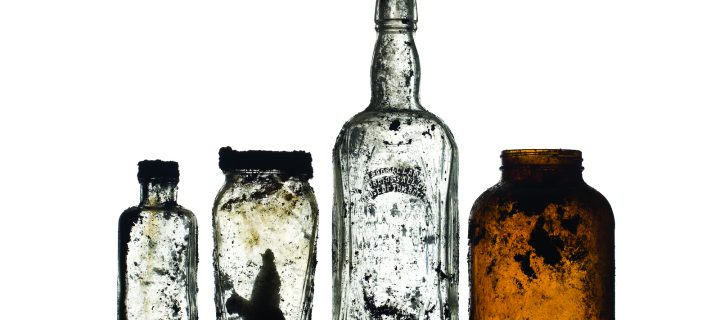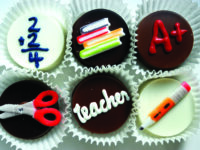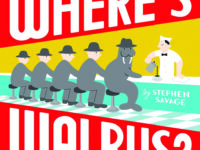September 11-December 8, 2018
Ever wonder about the life and times of people in your hometown 100 years ago? This fall, the Valene L. Smith Museum of Anthropology on the Chico State campus will uncover untold local and global histories. In an exhibition that explores Chico neighborhoods through the artifacts found on archaeological digs, visitors are invited into a world of the past. Most urban archaeology arises from construction sites that uncover artifacts from past dwellings or structures. Two separate excavations have yielded historical artifacts that show daily life a Century ago.
One excavation took place on the Chico State Campus when the current Student Services Building was being constructed in 2008. The excavation recovered over 40,000 artifacts dating to the early 1900s. The site on the corner of Second and Ivy Streets used to be a boarding house for the Normal Teacher’s College days, before the State University system was formed. Contrary to popular belief, the school was not named after the street; rather Normal Schools were founded all across the US to provide standardized training (aka “normal”) for teachers. Residents of the boarding house certainly would have been teachers from Chico High School, as well, which has been in its current location since its founding in 1902. From 1910 to 1940, Chico was ahead of the national goal to build high schools in every town. At that time in American history, most teachers in rural areas were transient employees, staying in small town placements for 2-5 years, hence the need for temporary housing. Teaching, in general, at that time, was seen as a stepping stone for men to more serious careers and a short-term job for young, middle-class women before marriage.
Many of the found objects associated with the boarding house are glass bottles and ceramics. These touchstones to the past help visitors really see and imagine how ordinary people lived in this rural northern California town when our grandparents, great-grandparents, or in some cases, great-great-grandparents were here.
Most of the artifacts from this site were recovered from buried cisterns, or water collection systems which were no longer needed as Chico began to modernize. Archaeologists love finding caches of other people’s garbage. What people throw out has the ability to encapsulate culture. Trash is basically the primary source of archaeological research. In this case, once the cisterns became trash receptacles in 1900, they were destined to become the future research of the lucky archaeologists that encountered the tossed items. What items of your life have you cast out? What might survive 100 years underground to become the exhibitions of 100 years from now?
When we think of tools that archaeologists use, we think of trowels and maps; but did you know that digging is really that last resort of modern archaeologists? For archaeologists, digging is just one part of the puzzle. The first part is asking good questions that will preserve the archaeological site for contextual analysis for later research. The second part recognizes one’s own cultural biases and historical timeframe, which influence the findings and interpretations. Another important “tool” for archaeologists is context. Context is defined by both the location that an artifact is found and the cultural situation in which it may have been used. When there is no written record, context may be tricky for archaeologists to determine. Since these exhibition sites took place in fairly recent history, many items fall into known facts and chronology of Chico history. Still, many details of the past owners or other deeper contexts are lost to time.
Another fascinating aspect of the exhibition connects visitors with the long abandoned historic Chinatown of Chico. During the construction of a new parking lot on Orient Street in downtown Chico, a small section of dirt yielded around 100 historic artifacts. These artifacts ranged from animal bone, ceramic fragments, melted glass, and small pieces of gold foil. What can we expect to learn about Chico Chinatown?
The Chinese came to California initially to build the railroad in early 1800s and ultimately expanded to northern California and Chico during the gold rush. They provided assistance in mines, as well as secondary needs like growing crops and laundry to miners. Remarkably, the census reveals that a significant portion of Chico were Chinese. In fact, 20% of Butte County residents were Chinese at that time. As the population of Chinese immigrants grew, the intolerance across the countryside grew as well. City government and court records show increasing unrest between Asian and American settlers, not just in Chico, but up to Klamath Falls and across to Reno as well. By the 1890s, most of Chinatown in Chico and beyond San Francisco had retreated back to larger urban centers. Continued research and analysis of this small historic Chinese collection will allow us to understand the important role this community served in our city’s history.
The exhibit will also turn its attention toward the future character of the Chico south-side neighborhood. What are the priorities that a city might emphasize when developing a neighborhood? What do inhabitants want today and how should one plan for sustainable living for future generations? By looking at current residents and city plans, one can see how decisions made today influence the future. The archaeology of Chico exhibition will help the North State public understand the lives of individuals, families and communities that might otherwise remain invisible.
The Museum of Anthropology is a teaching museum, whose mission is to preserve and protect human cultural diversity. Free one-hour tours for 1-12 grades are offered to teachers and their classrooms throughout the fall. The museum is a state-wide award winner for excellence in museum education with tour programs that focus on STEAM teaching standards. Tours provide hands-on activities to understand the past and emphasize Chico’s history. Students will be exposed to primary sources, maps, and artifacts. If you are interested in more information about the museum’s exhibitions or educational programs, please call us at 530 898-5397. The museum is open Tues-Sat 11am-3pm.






